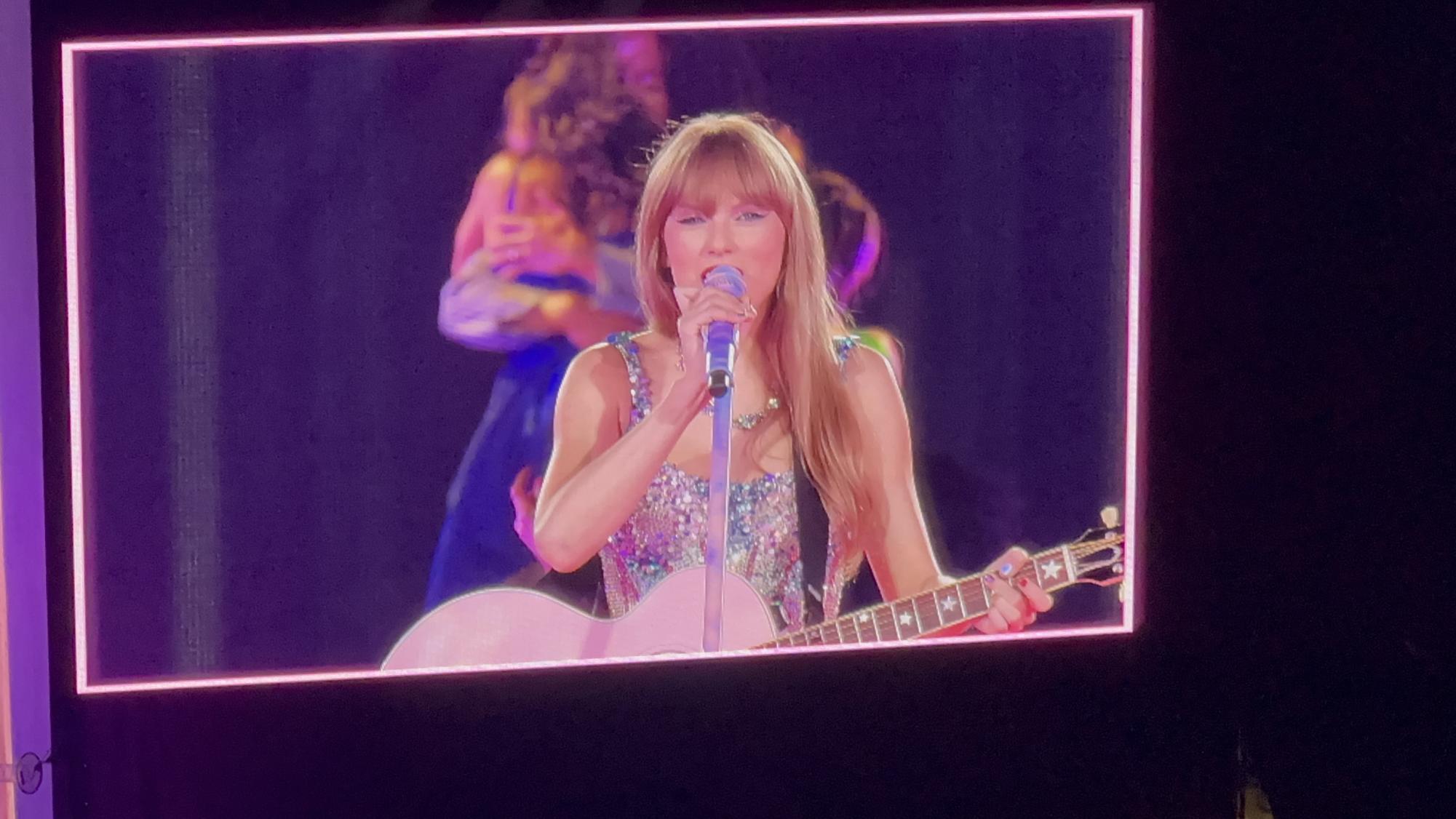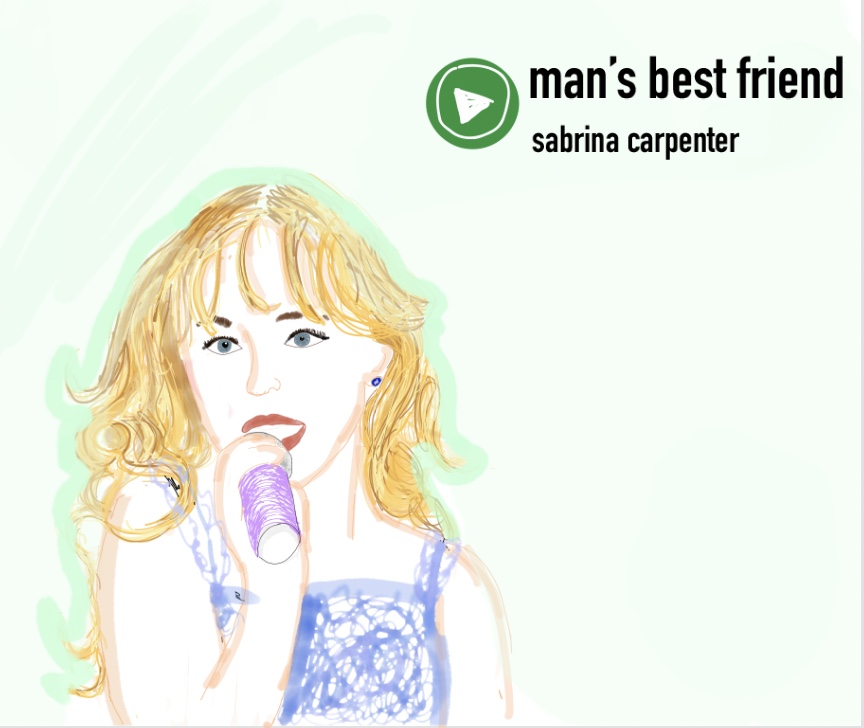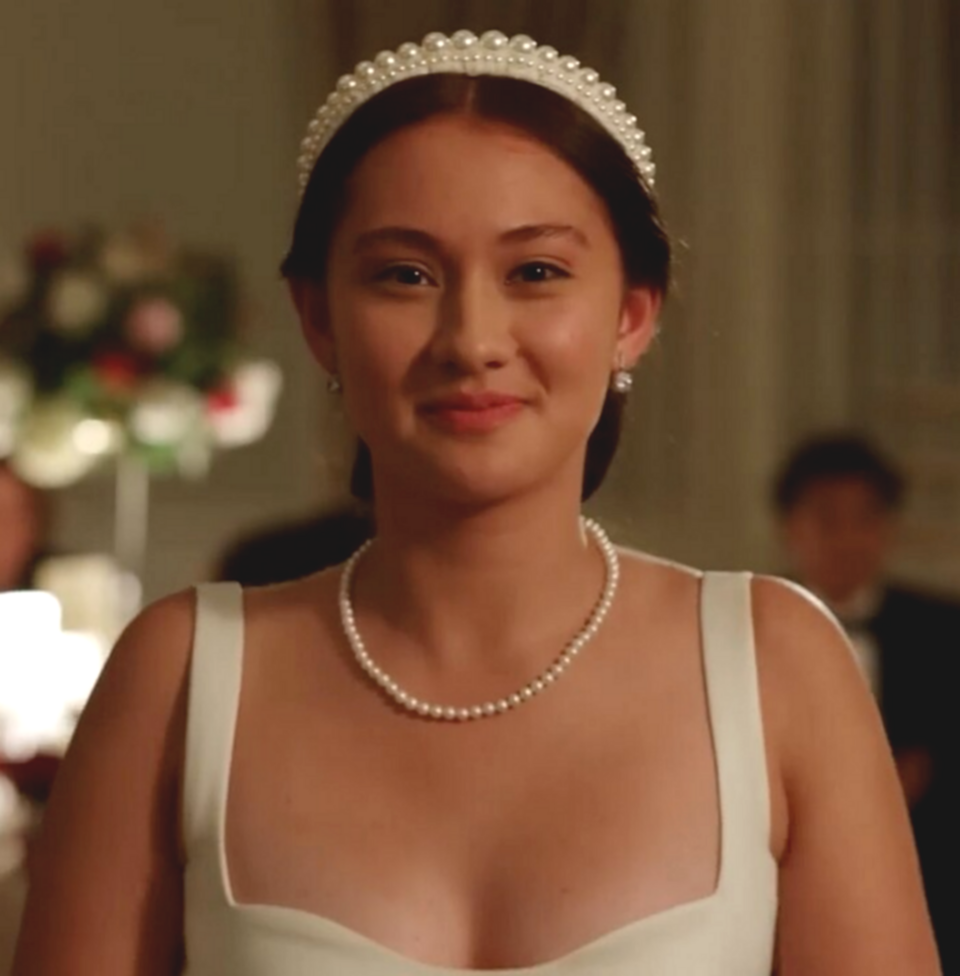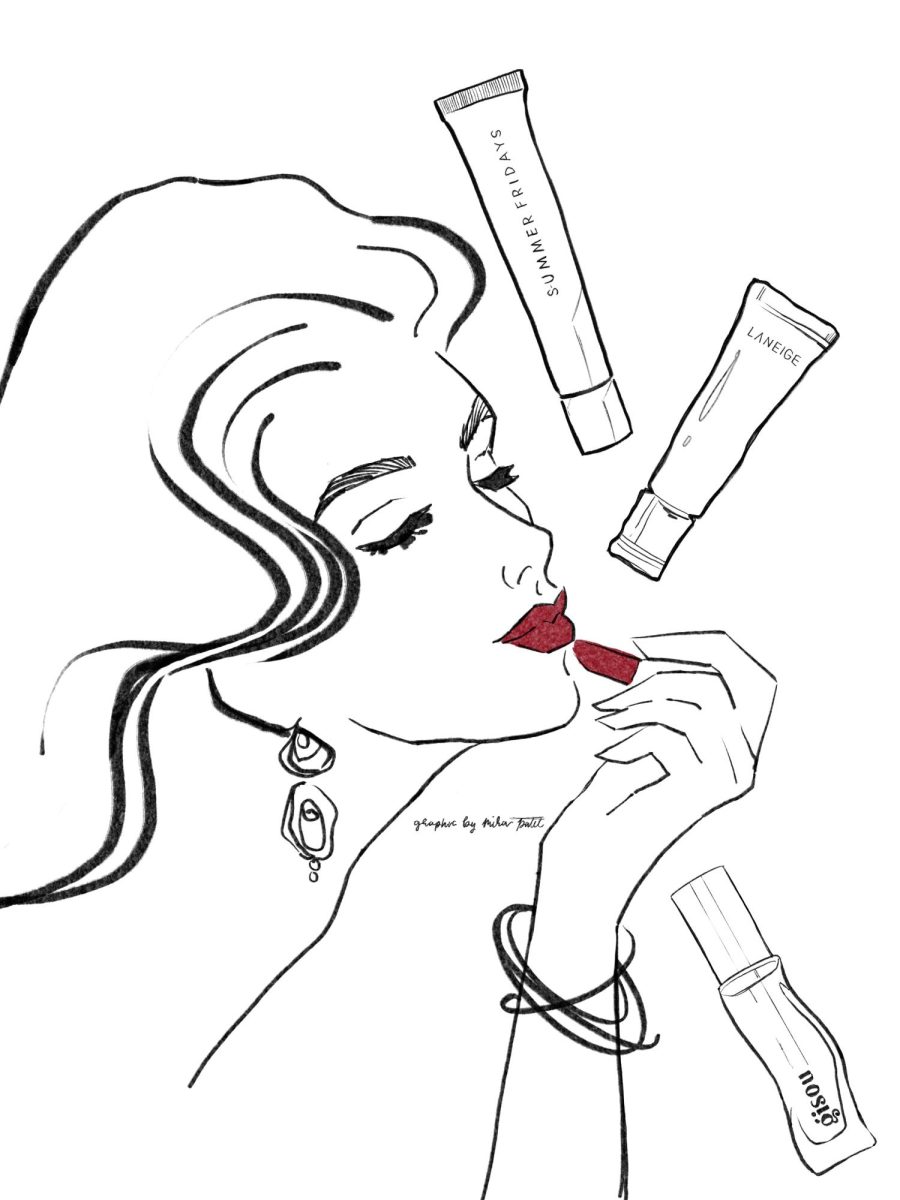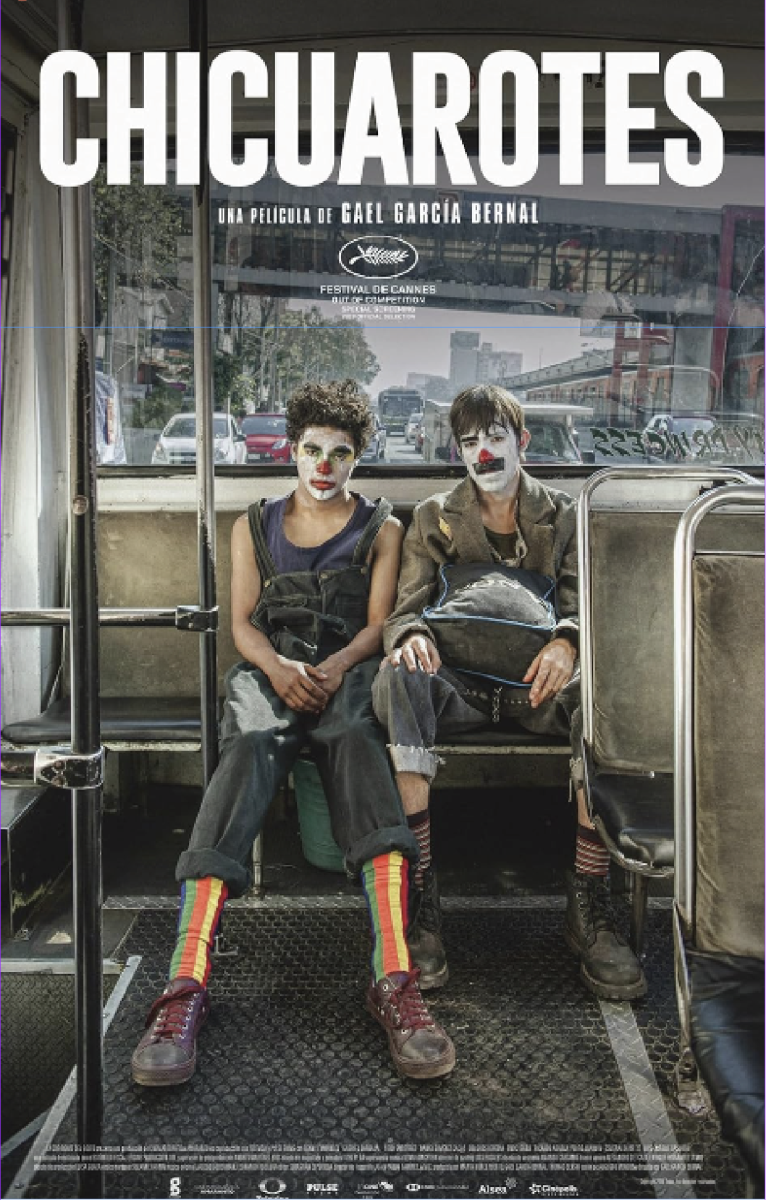On Oct. 3, Taylor Swift released her twelfth studio album, titled “The Life of a Showgirl.” The album has 12 tracks, with the final and title song featuring Sabrina Carpenter. This album differs from some of Swift’s past work, as Max Martin and Shellback are the main producers. Her recent albums have featured Aaron Dessner and Jack Antonoff as its main producers, so this was expected to be different from her past albums by many. Swift hadn’t worked with Martin since her pop debut album, 1989, in 2014. 1989 was full of synth beats and was critically acclaimed, so fans were expecting The Life of a Showgirl to live up to the same caliber. Many, including ourselves, were extremely let down by Swift’s twelfth album. Swift missed the lyricism and production mark on a majority of the songs. The album as a whole was quite mundane, not to mention extremely repetitive. Swift wasted an extreme amount of potential on The Life of a Showgirl.
A pop-synth beat on "The Fate of Ophelia" that Swift fans hadn’t heard in a long time from the artist opens up "The Life of a Showgirl." Basing the lyricism off of the Shakespeare classic Hamlet, Swift is able to put her own personal experiences in the light of the character Ophelia from the play. In Hamlet, Ophelia is deceived and manipulated by the protagonist and eventually spirals into insanity before tragically drowning in a brook. Swift is able to take the ideas that Shakespeare writes and infuse them into her own lyricism by describing a love that saved her from the “fate of Ophelia”. Although this song has very upbeat sounds and melodies, the lyrics add a dark twist to the song. The line, “but love was a cold bed full of scorpions,” creates a lyrical dissonance, presenting cheerful sounds with darker meanings behind them. The way that Swift is able to use the same metaphors that Shakespeare used in a play from the 1600s and incorporate modern day slang and understanding so elegantly is something that only she does best. The lyrics in the chorus, “I sat alone in my tower, you were just honing your powers,” being followed by a post-chorus consisting of modern ideas of Swift “pledging allegiance” to her lover’s “hands,” “team” and “vibes” exemplifies her ability to take older language and combine it with modern terms. Swift taking cues from Shakespeare and putting the playwright’s ideas into her own songs opens up conversation of his work and its impact. Having a global superstar as large as Swift using her platform to open these types of conversations with her young audience can be extremely beneficial. It’s beautiful that she decides to do such a thing.
The second track, "Elizabeth Taylor," pulls the listener into a slower, piano-backed beat before the beat drops into a chorus full of infectious bass. "Elizabeth Taylor" is Pelletier's favorite track off of the album. All she want to do while listening to the song is dance. Swift uses lyricism to relate the reputation and classic film culture references of Elizabeth Taylor, an iconic American actress from the mid-1900s, to her own personal struggles and fame. The reputation of Taylor during her film career was one of glitz, glamour, scandal and many men, similar to Swift herself and the rumors that constantly swirl around her public image. A few of the most remarkable lines on the track that relate the two artists to each other come in the chorus. Swift sings that she’d, “cry my eyes violet,” before singing, “be my NY when Hollywood hates me”, which adds another ominous turn to the song. Taylor was known for her remarkable violet eyes, and Swift is known for her own striking blue eyes. The idea is that when Swift becomes emotional, her blue eyes will mix with the irritated red from her tears, making them violet. That emotion could be interpreted as being caused by harsh public opinion of herself, but the lyric follows with one of endearment. Asking someone to be her place of escape, New York City, from the drama filled hills of California that she has to experience. We interpret this song as a love letter to the cultural impact of the stars that have come before her, but it’s also a love letter to someone who will stand by her throughout the unsteadiness that may come with the ebb and flow of her superstar career.
The production of track three, "Opalite", is a perfect example of what happens when the best two producers in pop, Max Martin and Shellback, come together on a song. An infectious beat similar to the previous tracks continues to take over the listener. "Opalite" feels like it would be bursting with glitter and happiness if it were to ever be opened. That same idea of a bursting joy seeps into the lyrics. Swift has used colors to represent her emotions, especially in regards to her romantic relationships, and "Opalite" is no different. Swift sings of experiencing a love that put her into an, “onyx night” before meeting someone who put her into a place where, “the sky is opalite.” "Opalite" is a man-made opal, creating symbolism in her lyrics, because just as opalite is manufactured, love can be reconstructed and healed too. Although the song has a fun, synthy beat, it’s not anything unique. Opalite falls lower on my ranking of the album. Swift had the opportunity to utilize her incredible lyricist abilities when relating color to emotion. I feel like "Opalite" could’ve made a much larger impact on the record if it had been approached differently. To us, it sounds like every other pop song currently on Top 40 radio stations.
Swift returned to her storytelling roots for "Father Figure." Using a sample of George Michael's 1988 hit of the same name, Swift uses her full vocal range and lyricism abilities on the track. Swift sings of a mentor who eventually turned their back on her career. The mentor in question is Scooter Braun, a businessman who Swift worked with during the first half of her career. When Swift signed her first record deal, Braun held the rights to all of the master recordings of her music, so when he sold the master recordings without her knowledge, Swift couldn’t do anything about it. The 2019 deal that sold Swift’s masters made international headlines and started the domino effect that caused Swift to re-record a majority of her music to maintain rights to some sort of her writing and art. This implied shift of betrayal, hints to reclamation as Swift includes the lyrics “this empire belongs to me;" she built this life and fandom and wants it back. Recently Swift was able to buy back all of her master recordings. In "Father Figure," Braun is first depicted as Swift’s mentor. As someone who tried to take credit for her career, Swift emphasizes that she now has control over the situation and she is his “father figure." Lyrics such as, “I protect the family,” and “whose portrait’s on the mantel,” highlights how she has control over her “family” of music. Swift is known as being one of the driving names in the music industry, so her name and likeness, or her “portrait” will always follow Braun around. I think the idea of Swift taking control of the situation and flipping the narrative through incredible, visual lyricism is so powerful that it cements "Father Figure as one of the best," most impactful tracks on the new album.
A slow, heartbreaking melody takes the listener through track five, Eldest Daughter. Swift is notorious for tragic track fives on all of her albums, and this one was no different. She sings of an apathetic world that hurts to be a part of. The societal ideals of having to be “cool” cause Swift to live a life where laughter is rare. Many fans have had varied opinions on this song, as they find it to have “cringey lyrics”, however Sienna thinks that Swift used that element of storytelling on purpose. The eldest daughter often feels she has to do everything right and wants to constantly fit in. By calling herself things like a “savage”, it creates a sense of irony because she wants to say these types of “trendy” words to feel she fits in with society, but as a result she gets judged for trying. Arwen thinks that although Swift represents those emotions with such impactful writing, there are certain parts of Eldest Daughter where she took opportunities to turn her writing even more powerful but instead used lyricism that reads like my edgy poetry from fifth grade. Lines such as, “every eldest daughter was the first lamb to the slaughter, so we all dressed up as wolves and we looked fire” have so much potential but she used none of it. "Eldest Daughter" had the opportunity to be a groundbreaking track five, and Swift only pushed it halfway to the edge, not over. For Sienna, she finds this song to have a beautiful piano melody, with lyrics that have deeper meaning than to the naked eye. This is Sienna's personal favorite song on the album because she finds it to be relatable as a fellow eldest daughter, as she too has had to learn things like “cautious discretion."
This song begins with upbeat notes and lyrics where Swift is able to transport her listener into a setting with the use of relatable visuals that a lot of people have experienced once or twice in their lives. Swift takes the listener through her own high school experience of having feelings for one of her closest friends, and the regret that she never admitted how she felt about him. Using visuals such as “glistening grass from September rain; Gray overpass full of neon names; Gallatin Road and the lakeside Beach; Watching the game from your brother's Jeep” transports the listener into Swift’s own memories. Using high school stereotypes like prom and wilted corsages makes the listener feel comfortable until Swift reveals that the crush she’s singing about passed away. On our first listen of "Ruin the Friendship," we were enjoying the song and felt relieved that there was at least one more good song on the album until Swift sang, “when I left school, I lost track of you; Abigail called me with the bad news; Goodbye, and we'll never know why.” That line destroyed both of us, and reminded us of how impactful Swift’s songs can be to a listener. We see this as Swift's final goodbye to how she felt about this love, before she gets married. Swift put the idea of never having regrets into simple terms on "Ruin the Friendship," but it didn’t downplay how important the moral is.
Swift viciously tears into an opponent on track seven, "Actually Romantic." The suspected enemy that Swift burns at the literary stake on the track is Charli XCX, a British pop star. The two have had a long lasting feud, and the last time a diss track between the two was dropped was "Sympathy is a knife," released on Charli XCX’s album "Brat." Although Swift tears into the British pop star with jabs such as, “it's precious, adorable, like a toy chihuahua barking at me from a tiny purse” and “how many times has your boyfriend said ‘Why are we always talking 'bout her?,’” the song is not special. "Actually Romantic" proved to be another let down of "The Life of a Showgirl." The production is so similar to multiple other songs on the album that it can be hard to tell them apart at times. The lyricism is a let down as well. Swift writes certain catchy lines on the track, but a majority of the lyrics sound like they come from a middle school reading level short novel.
Once you get to "Wi$h Li$t," you may expect Swift to be vocalizing along a track that sounds a little bit different than every other song’s production before track eight. You’d be mistaken if you think it’ll be any different. Swift, Shellback and Martin decided to produce track eight similarly to the rest of the album and added no variety. Production aside, the lyricism on "Wi$h Li$t" is undeniably fun to say the least. It may not be the most metaphorical, but Swift took her ideas and ran with them. Pop culture references from Cannes film festival to European soccer clubs all the way to designer fashion brands that represent what Swift believes a lot of people at the same caliber as her desire are sprinkled throughout the lyrics. Swift juxtaposes a traditional “wish list” of celebrities wanting “bright lights and Balenciaga shades”, with Swift's own wish list, “have a couple kids get the whole block looking like you." Swift uses these references as a counterpoint to what she actually desires. In comparison, she sings of a desired life of mundanity -- a life full of, “a couple kids” and a “basketball hoop in the driveway.” Swift references past experiences with failed relationships, expressing her hope to finally find the love she is looking for. Honestly, I find the lyricism extremely refreshing and relatable. A lot of people desire the most expensive and luxurious items, but in reality, it can be so special to lead a life focused on family. It’s invigorating to hear someone at such a high stance in the public eye as Swift is singing of a want of such everydayness.
Swift’s vocals shine as track nine opens and the singer spreads adult references across the song. Although a majority of the song is filled with vulgar lyrics, it shouldn’t be a surprise to anyone who’s read this far into the review that the production of "Wood" is eerily similar to the rest of the album. The production on track nine is slightly more tolerable, but the listener is easily distracted by the lyricism. Swift was able to sprinkle some innocence throughout the lyrics, and one of my favorite examples of this is the lyric, “girls, I don't need to catch the bouquet to know a hard rock is on the way.” The lyric shows that Swift is comfortable and confident enough in her relationship that she doesn’t need any superstitious sign to commit to her other half. "Wood" lands in about the middle of my ranking. It’s a good song, and definitely better than some other tracks, but there is always room for improvement on this album.
Swift has faced intense amounts of scrutiny and criticism over her career, and she begins to highlight such experiences in a way on track 10, “CANCELLED!” The singer writes of being surrounded by people that have stuck by her side throughout the ups and downs of her career. Surprisingly, in contrast to the rest of the album, there are a few places where lyricism shines on this track. Swift shares her personal experiences with cancel culture, and uses diction like "poison thorny flowers” and “welcome to my underworld where it gets quite dark”, to represent how toxic and degrading it can feel. Swift highlights this through her issues with notorious Kanye West and Kim Kardashian drama in the late 2010s. The singer was publicly humiliated by West and the “downfall” of her career began to trend internationally causing her to hide from the public eye for years. Highlighting that she knows who her true friends are because they’re the ones that stuck by her side during her struggles is impressive. We’ve found in the past, at least, that Swift sings of the effects on her personal image of herself, not about the ones around her. Overall, track 10 is a fun one, and honestly, it’s growing on us.
On track 11, "Honey," Swift sings of the term switching from one she’d experienced in a passive aggressive manner to experiencing it in a form of endearment. This is a sweet love song that we think came straight from Swift’s "Lover" album. This song gives listeners hope that new love can heal past wounds. However, there are certain areas in the song that I feel would shine if the synth backing track was removed and Swift vocalized along an acoustic track instead. The song goes through faster rhythms followed by slower sections, and honestly, it ruins it. Swift and her producers should’ve chosen one way to approach the production on the track and really lean into it. The entirety of the song sounds confused about what it wants to be. If they had leaned into a slower beat, and more genuine instrumentals, Honey really could’ve shined as a track on the album. Unfortunately, they didn’t do this, so the fairly written lyrics are hidden underneath basic synth beats.
12. The Life of a Showgirl (feat. Sabrina Carpenter)
The final track, "The Life of a Showgirl," is as fun as we expected the entire album to be. The production feels thought out, and although the lyrics are simple, they aren’t attempting to be something they’re not. Swift reflects on her own personal fame and feeling misunderstood in the spotlight by singing from the viewpoint of a young fan named Kitty. Fame is traditionally alluring, and Swift heavily plays into this idea on the track. Being accompanied on the track by her friend, and fellow star Sabrina Carpenter allows for another viewpoint of the realities of fame in the lyricism as well. The two sing of the struggles, and then eventual acceptance of showbusiness. Sure, it comes with harm and foul but the benefits of seeing the joy that your art brings others is worth it. As they always do on Swift tracks, the bridge of the song shines. Carpenter’s angelic voice mixes with Swift and together they sing, “I took her pearls of wisdom, hung them from my neck; I paid my dues with every bruise, I knew what to expect.” Swift knew what she was getting into when she began her fame. She might not have known the full scope, but she knew that a lot could happen. Swift was along for the ride, and over the past 20 years of her career, she’s experienced so, so much, but on the closing track she reflects and decides she wouldn’t change it for a thing. Swift’s own self-reflection ends the new album on a high note.
Although a majority of the album was a let-down, there were a few tracks that shined. After the release of “The Life of a Showgirl,” Swift proceeded to release acoustic versions of certain songs. On these renditions, her vocals took over the entire track and they sounded incredible. If Swift had taken this approach with the entire album and not produced it in such a repetitive manner, we think that it would have been received by our own ears much happier. Overall, “The Life of a Showgirl” needed a few more rehearsals and revisions to be as good as many had hoped. We give Swift’s newest release 3 out of 5 stars: it really missed the mark.



